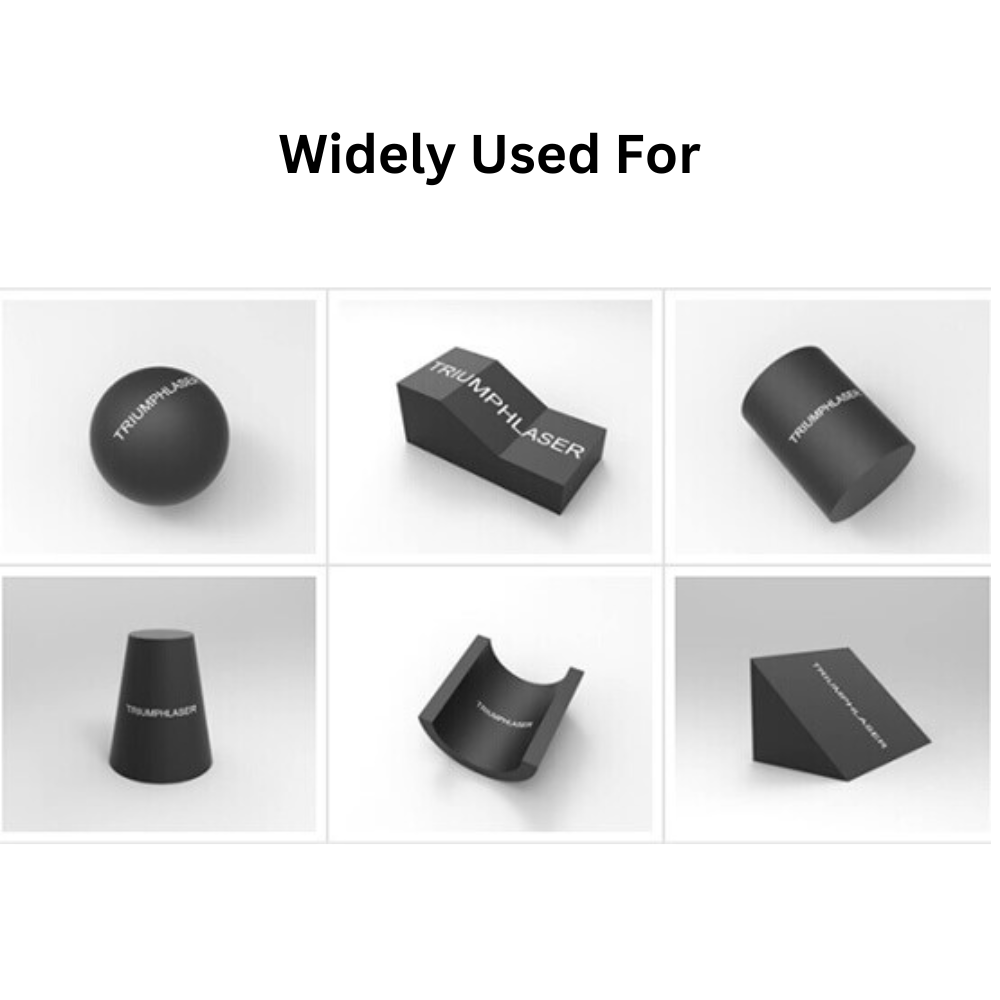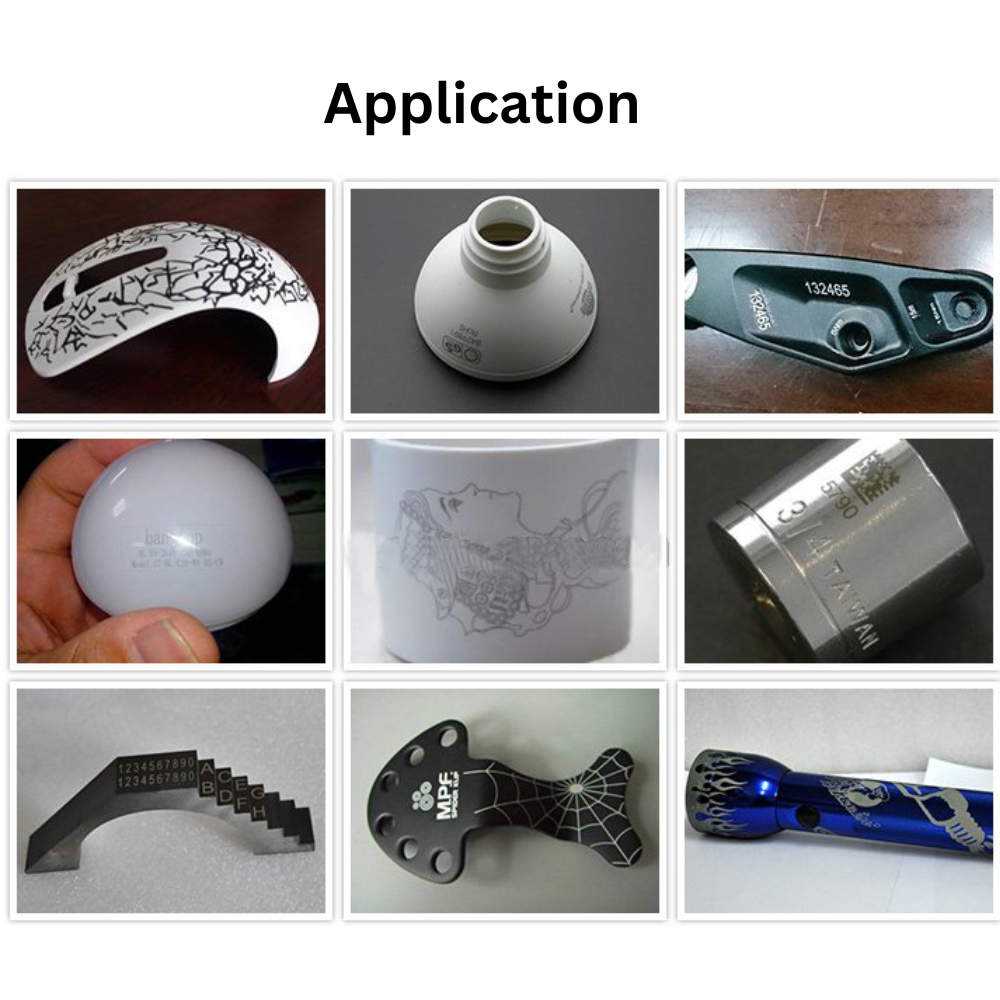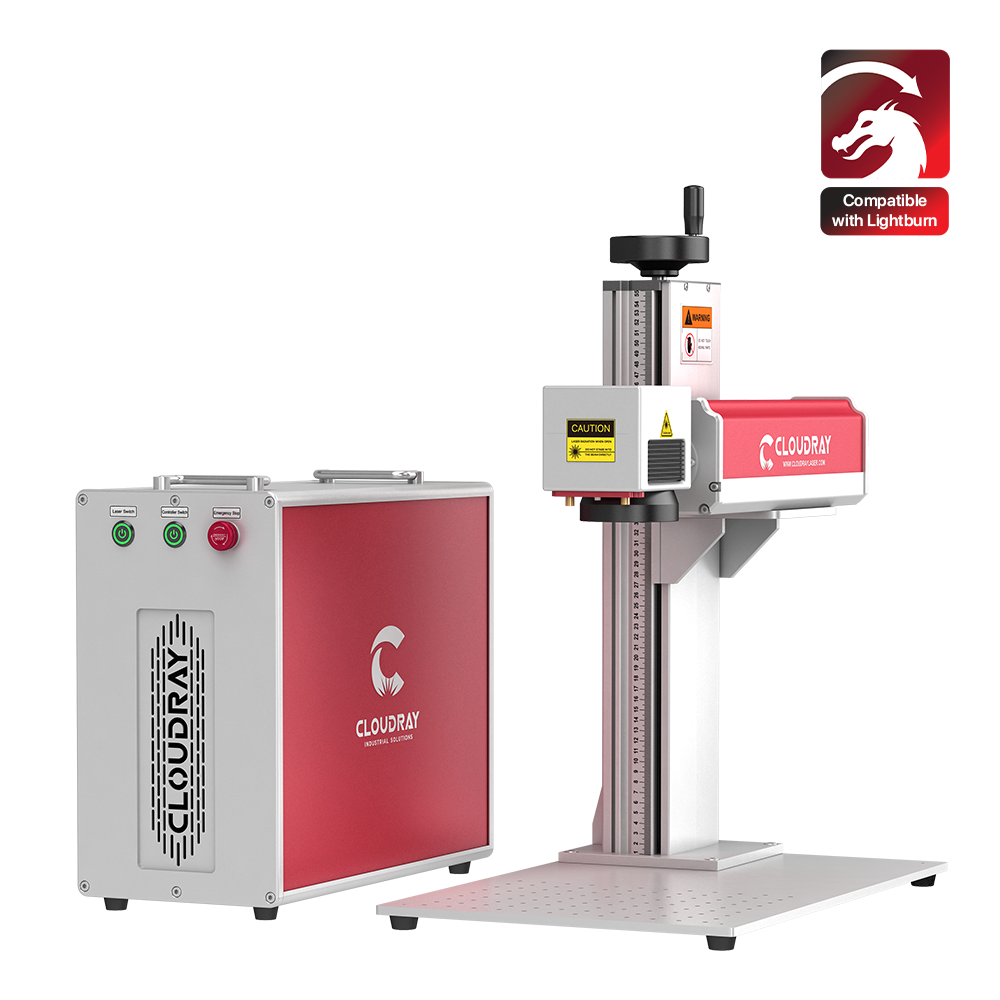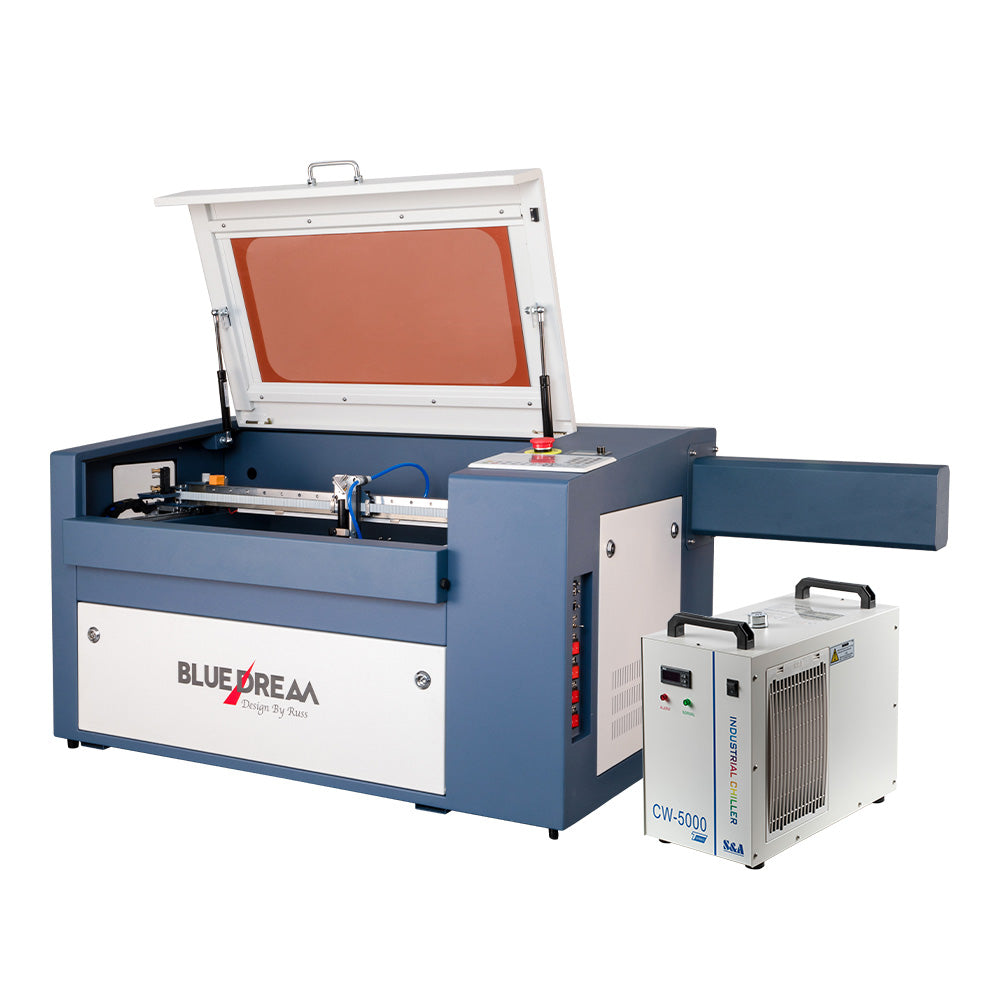2D: can mark on flat surface of material, cannot mark on a surface with a bigger drop, and cannot engrave intricate relief carvings.
2D has 2 true axis of X Y axis moving
2.5D: beside 2D's work, it can engrave intricate relief carvings, but cannot mark a photograph or vector on non-planar.
2.5D has a 3rd axis but its of very limited utility. It uses the electric Z axis to realize the function of moving up and down
3D: besides 2D and 2.5D works, it can mark uneven surface, such as a slop, a hook face, stages and other irregular surface.
3D has 3 true and relatively equal axis of movement/control in something resembling “volume”.
GM-100 (2D)
- Fuente láser: 100W JPT (Mopa)
- Galvo: JCZ (unidad integrada y control)
- Software: Ezcard 2
- Funciones: Construido en cámara; Ajustar la posición de marcado directamente en ezcard
- Actualización de soporte o personalizar a 3D Patterm (consultar info@cloudray.com si es necesario)
AR-100 (2.5D)
- Fuente láser: 100W JPT (Mopa)
- Galvo: Cloudray personalizado
- Software: Ezcard 3
- Funciones: Diseñado para grabado y corte preciso, especialmente para grabado 2.5d
- Soporte personalizado a diferentes vatios y actualizar galvo si es necesario (contacto info@cloudray.com)
AR-50
- Fuente láser: 50W Raycus (Q-Switched)
- Galvo: Galvanómetro Feeltek 3D
- Software: LenMark 3DS
- Funciones: Diseñado para el grabado 3D
- Máquina de grabado cerrado, seguro y evitar que el humo funcione (si no está familiarizado con el software 3D, es difícil para usted usar esta máquina al principio)
2D Engraving
2D laser engraving machine are widely used in many fields. For example, metal engraving such as stainless steel, carbon steel, gold, silver, copper, Brass and aluminum, and some plastic engraving such as animal ear tags,Keyboard,polymer,ABS and so on. it widely use in market.
Application of 2D laser engraving machine:
The fiber laser engraving machine available on the market satisfies most laser marking applications, such as logo making, serial numbers, technical specifications and other designs on metals (copper, iron, steel, stainless steel, titanium, aluminum, gold, silver, Brass Marking alloys, etc.) and ABS, etc. However, the working area of the fiber laser engraving machine mostly is 200*200mm, there have optional lens can bigger the engraving area: such as 70*70mm, 110*110mm, 200*200mm 300*300mm Most of them are also equipped with low-power laser sources. Such as 20w 30W 50W 60w 80W 100W and so on.
2.5D Engraving
The 2.5D fiber laser with 2D galvo head,which have not the Z axis mirror. It used the Motorized lifting pillar stands for the third mirror to move automatically.
Its working process is: in the process of processing, each layer is processed, the motorized lifting pillar moves, adjusts the height of the galvanometer, and then emits laser, so as to ensure that the laser spot is well focused on each layer, and finally achieve the relief effect.
2.5D laser engraving machine can finish all 2D laser work and can make 3D laser engraving on flat plate. 2.5D CANNOT make 3D engraving on curved part.
Lifting pillar of 2.5D laser machine must be motorized type. Because laser head need to re adjust the focus during engraving.
3D Engraving
3D means dynamic focusing. Compared with ordinary 2D fiber laser machines, 3D laser marking machines use different Laser head. Ordinary 2D fiber Laser Machine is use 2D galvo scanning head have only two mirrors, while 3D fiber Laser machine is use 3D Dynamic focus scanning head scanning heads have three mirrors. The third mirror can be moved back and forth. This is the key technology of 3D laser marking machine.
3D means dynamic focusing.3D laser machine with 3D galvo head,which have three mirrors,the Z axis mirror can be moved back and forth.
The 2.5D laser with 2D galvo head,which only have two mirrors.
This is the key technology of 3D laser marking machine.
Its working process is: the joint coordination of the Z-direction dynamic axis and the XY-axis is controlled by software. With the difference of the number of processing layers, the Z-direction dynamic axis moves back and forth to focus compensation to ensure the consistency of the light spot during the whole work process.
In contrast, when the 3D galvanometer is processing relief, the Z-axis and the XY-axis are fully coordinated, which can achieve nearly microsecond forward and backward movement focus compensation, without being restricted by an external lift table, and higher efficiency and accuracy. The 3D galvanometer is more inclined to industrialized products.










